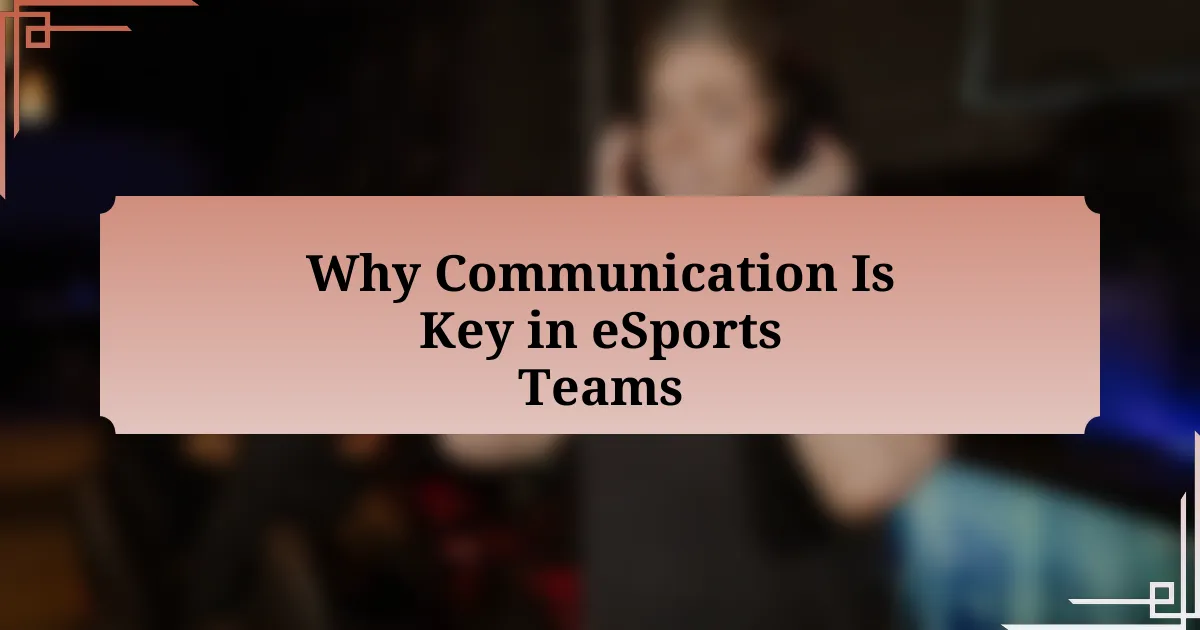Key takeaways:
- eSports requires effective communication, blending verbal and non-verbal cues to enhance teamwork and performance.
- Open feedback and clear role definitions foster trust, collaboration, and improvement among team members.
- Overcoming communication barriers is essential, utilizing both technology and visual aids to maintain clarity during high-pressure situations.
Author: Evelyn Hartley
Bio: Evelyn Hartley is an award-winning author known for her compelling narratives and richly drawn characters. With a background in psychology and literature, she weaves intricate tales that explore the complexities of human relationships and the intricacies of the human psyche. Her debut novel, “Whispers in the Dark,” was celebrated by critics and readers alike, earning her a dedicated following. Evelyn’s work has been featured in various literary journals and anthologies, and she frequently speaks at writing conferences and workshops. When she’s not writing, she enjoys hiking in the mountains and volunteering at her local animal shelter. She resides in Seattle with her two rescue dogs, Luna and Milo.
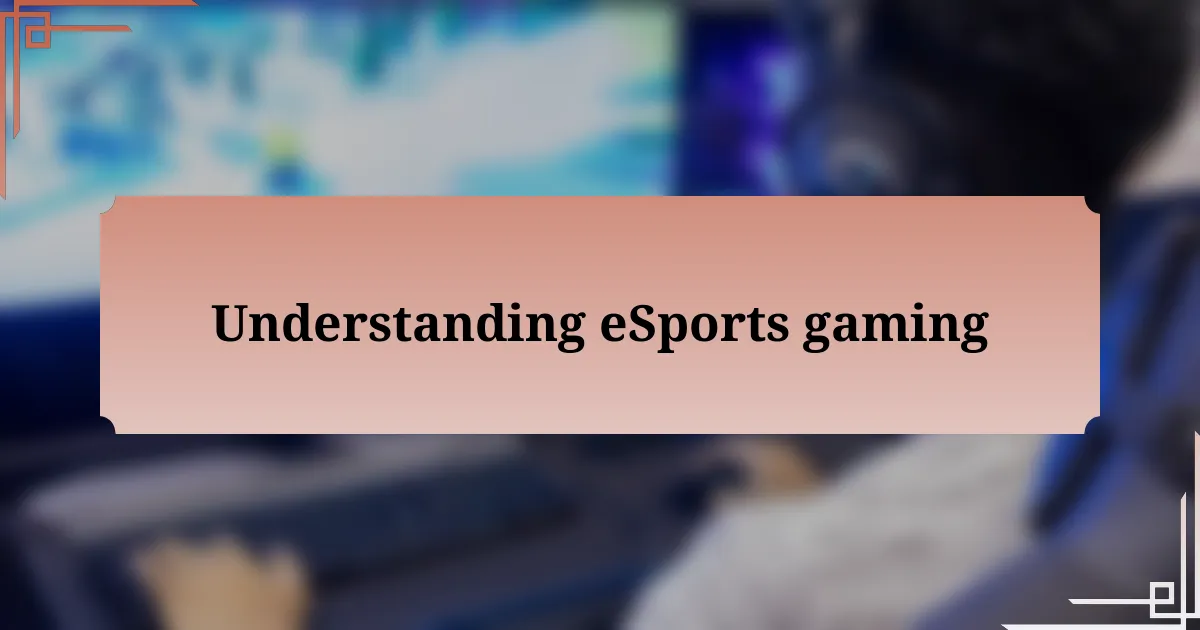
Understanding eSports gaming
In understanding eSports gaming, it’s crucial to recognize that it’s not just about playing video games at a competitive level—it’s a blend of teamwork, strategy, and high-stakes performance. I remember the first time I witnessed a live tournament; the atmosphere buzzed with energy, as fans cheered on their favorite teams. That moment made me realize how deeply interconnected the gaming experience is with community and shared passion.
The competitive landscape of eSports has grown exponentially, transcending borders and connecting players worldwide. With so many diverse games and genres, from first-person shooters to real-time strategy, it’s fascinating to think about how each game fosters its unique culture of collaboration and rivalry. Have you ever considered how vital communication is when a team’s success depends on their ability to strategize in real-time?
Moreover, eSports demands not only individual skill but also a strong synergy among teammates. Participating in online matches myself, I’ve often felt that even a single miscommunication can lead to a lost game, reinforcing that clarity and trust among team members are the cornerstones of success. This interconnectedness makes understanding eSports essential not just for players, but for anyone who wants to appreciate the dynamics of this emerging sport.
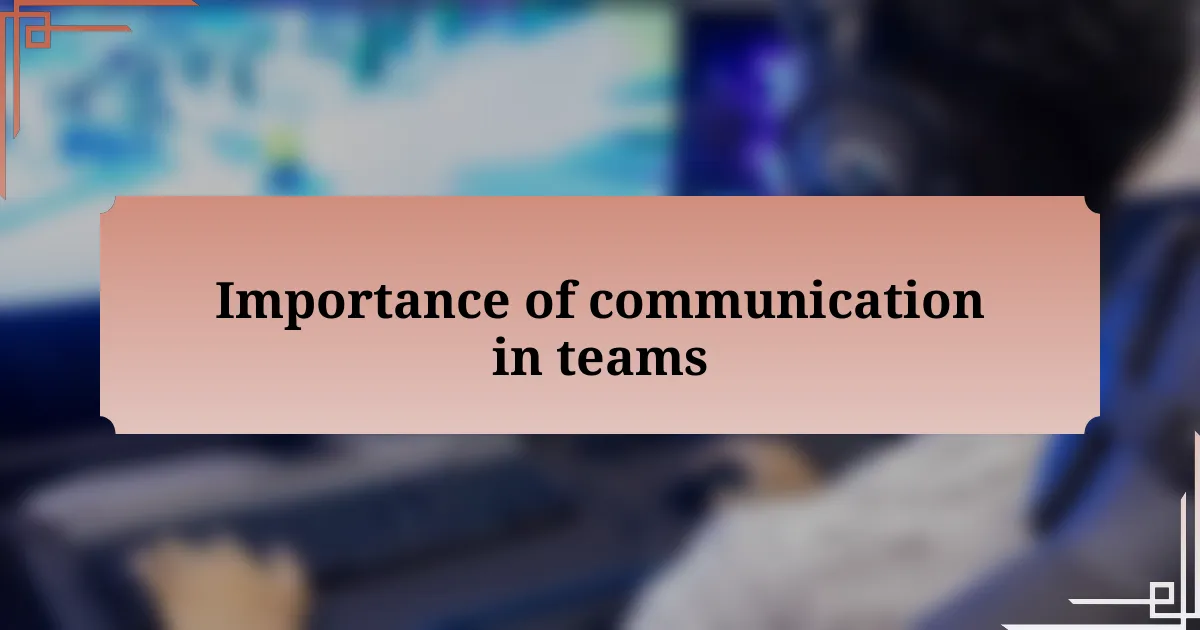
Importance of communication in teams
Effective communication within eSports teams cannot be overstated. I recall a match where my team was set to execute a complex strategy. The tension was palpable, but everything fell apart because one player misunderstood the call. In that moment, I felt firsthand how even the slightest breakdown in communication could lead to chaos and defeat.
Moreover, when teams communicate openly, they cultivate an environment of trust and collaboration. I’ve seen teams thrive when members share their thoughts and feelings about gameplay, making it easier to adapt and improve. Have you ever been part of a team where everyone felt comfortable expressing their concerns? Those teams often emerge stronger, learning from their missteps together.
It’s also important to note that communication isn’t just verbal; it encompasses non-verbal cues as well. While playing, I’ve relied on body language and in-game actions to gauge my teammates’ emotions and reactions. This intuitive understanding can be a game-changer. So, isn’t it fascinating how the nuances of communication shape the dynamics of teamwork in eSports?
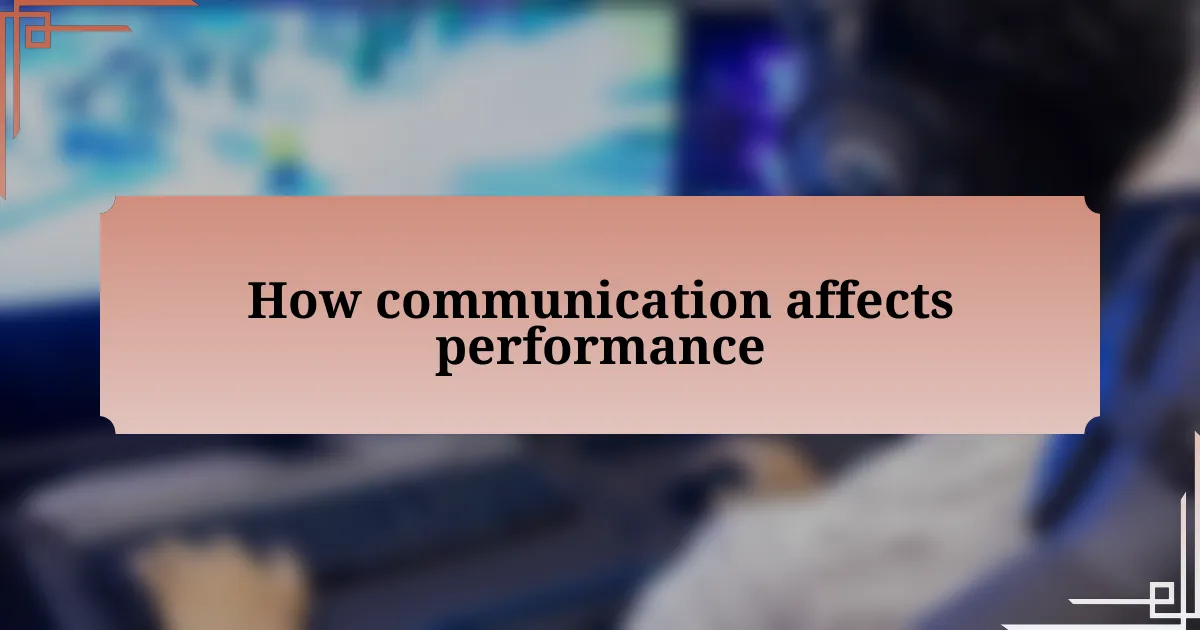
How communication affects performance
How we communicate during critical moments directly impacts our performance. I remember playing in a high-stakes tournament when we faced an unexpected strategy from our opponents. In that split second, clear and concise communication allowed us to pivot our plans, enabling us to secure a crucial win. Have you noticed how effective teams often seem to share an unspoken connection? That’s the beauty of dynamic communication in action.
Another aspect that stands out is the role of feedback in team performance. When I was part of a team that regularly discussed our gameplay, the openness led to immediate improvements. I still recall the session where we dissected our last match, and constructive criticism flowed freely. It felt empowering to address weaknesses together, ultimately fortifying our bonds and enhancing our overall game.
Finally, emotional intelligence plays a significant role in how well we communicate under pressure. I once found myself in a tense match where nerves were running high. By paying attention to my teammates’ voices, I could sense anxiety and redirect our focus with calm reassurance. In those moments, being mindful of each other’s emotional states truly elevates a team’s performance. Have you experienced a moment where empathetic communication turned a potential loss into a memorable victory? Those moments often define the essence of great teamwork.
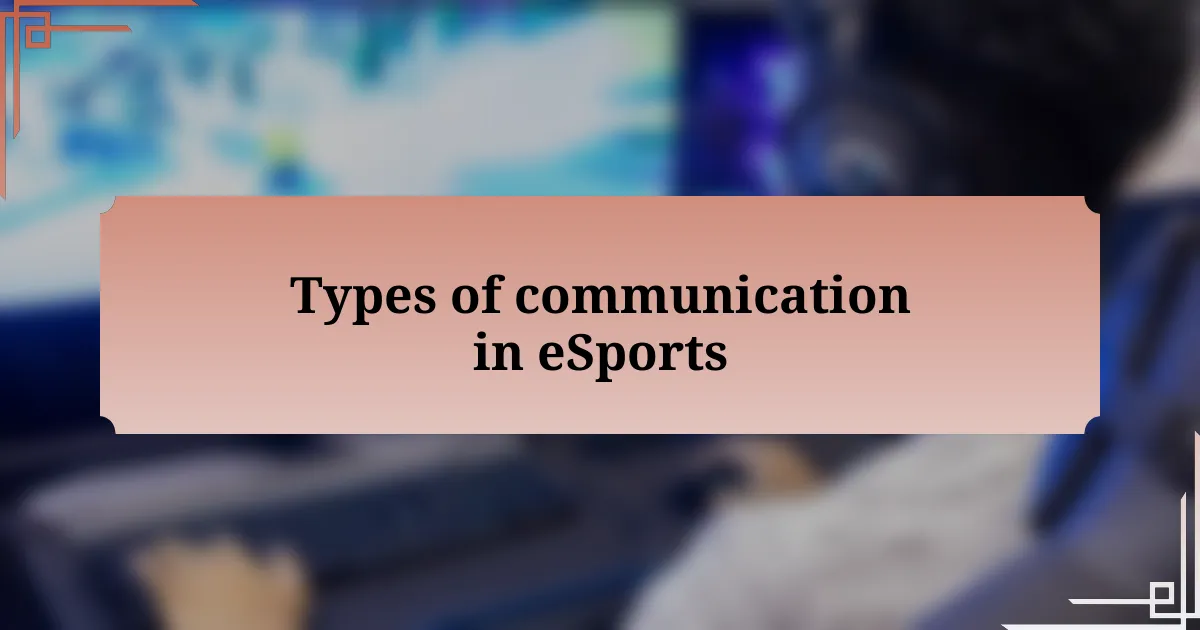
Types of communication in eSports
Throughout my experience in eSports, I’ve come to appreciate the varied forms of communication that enhance teamwork. For instance, voice communication often serves as the backbone of strategy execution. I distinctly remember a match where my team’s ability to quickly call out enemy locations in real-time made all the difference. It’s fascinating how a few well-timed words can guide our actions, leading us from confusion to coordinated assaults.
Another crucial type is non-verbal communication, which can be just as powerful as spoken words. I once played alongside a teammate who had an incredible knack for signaling with gestures. In a particularly frantic match, his use of pings and body language conveyed strategy without uttering a single word. Have you ever felt a moment when silence spoke volumes? Those unspoken cues can build intricate layers of understanding that often surpass verbal exchanges.
Moreover, digital communication through chat platforms plays a large role, especially during practice sessions. I recall a time when our team utilized a shared document to track strategies and feedback. The clarity it provided helped us keep tabs on our growth and made following each other’s thought processes far easier. In your experience, have you found that written communication aids in aligning team goals? It certainly did wonders for us.
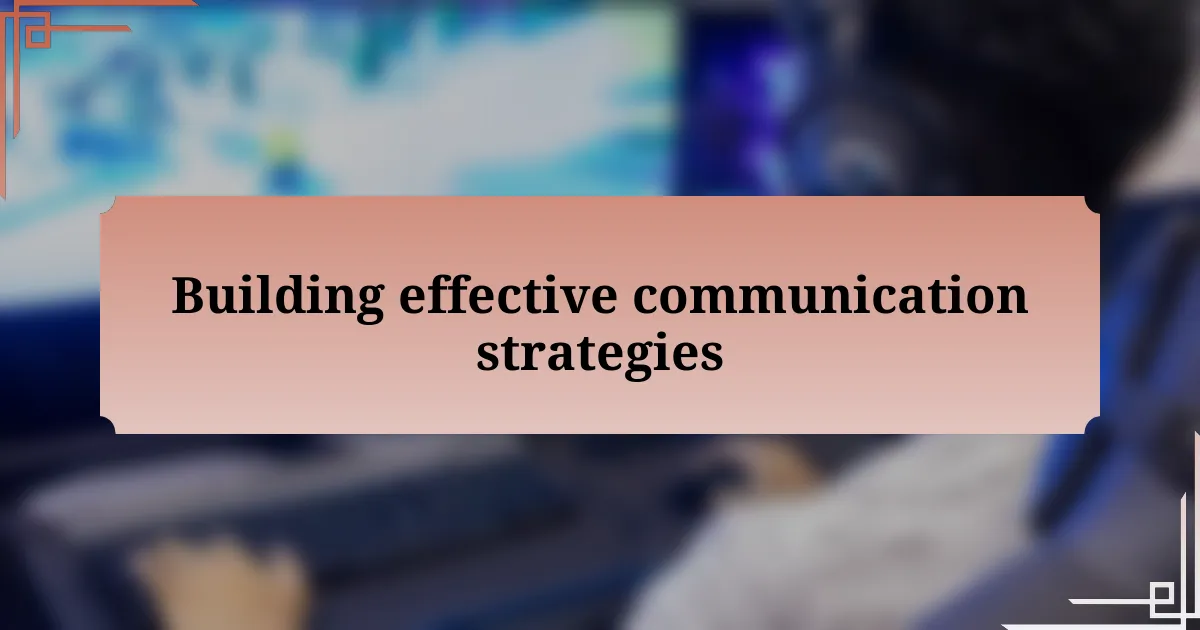
Building effective communication strategies
Effective communication strategies in eSports require a blend of clarity and purpose. I’ve often found that establishing predefined roles within the team can streamline discussions during high-stakes matches. For example, when I played as a support character, knowing who would lead strategy calls allowed me to focus on executing my role without second-guessing my decisions. Isn’t it empowering to have that level of trust in your teammates?
Another element of building communication strategies is encouraging an open feedback culture. I still remember a challenging season when our team struggled to gel. To turn things around, we instituted regular debriefs after matches. It felt uncomfortable at first, but sharing thoughts and suggestions generated fantastic conversations that not only improved our gameplay but also strengthened our bonds. Have you tried implementing a feedback loop in your team? It might be a game-changer.
Lastly, creating a safe space for communication is crucial. In one of my previous teams, we made it a point to check in on each other’s mental state pre- and post-match. This focus on emotional well-being helped elevate our performance, as we became more attuned to each other’s needs. How often do you think about the emotional dynamics of your team? A little empathy in your communication can go a long way in achieving collective success.
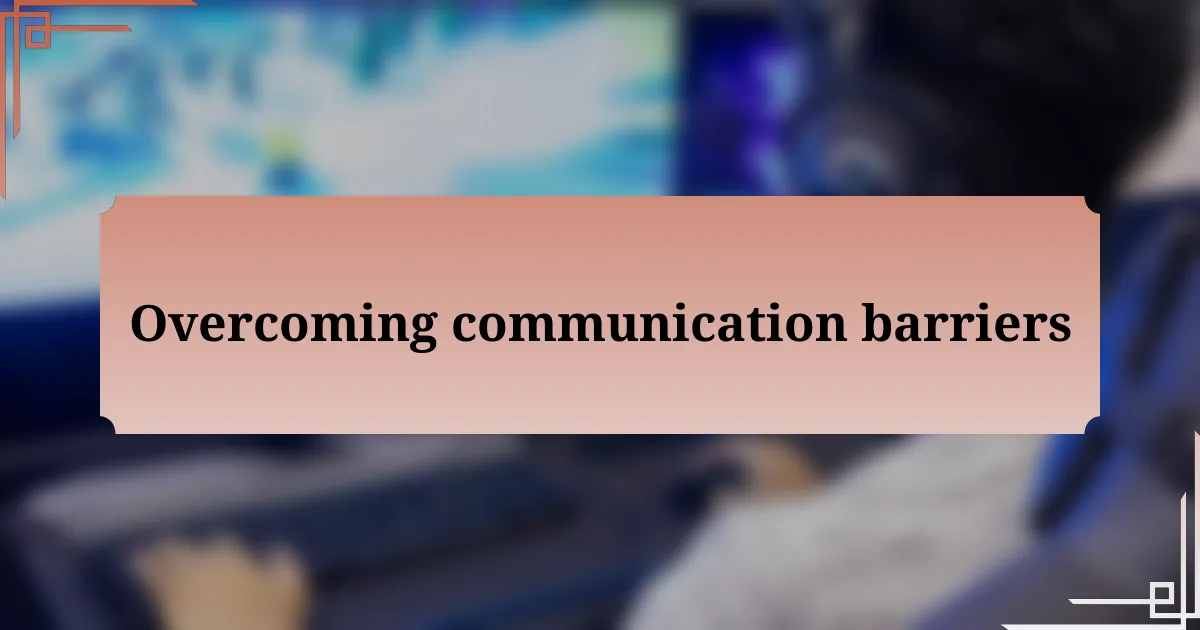
Overcoming communication barriers
Overcoming communication barriers in eSports often involves addressing the different styles and preferences team members exhibit. In one of my recent teams, we had a player who preferred concise, direct communication, while others leaned towards more elaborate discussions. By recognizing these differences, we implemented a simple rule: when calling out strategies, we alternated between concise commands and detailed explanations. This way, everyone felt included and understood, fostering unity in our gameplay.
I’ve also found that using technology effectively can bridge gaps in communication. During a particularly intense tournament, we relied on voice chat and shared digital tools to ensure we were all on the same page. I remember one match where the callouts were rapid, yet the clarity of our team’s responses kept us synchronized. If you’ve ever been lost during a team fight, you know how crucial it is to maintain clarity in communication under pressure.
Sometimes, non-verbal cues can also play a significant role in overcoming these barriers. I vividly recall a moment when we struggled to articulate our thoughts verbally, and one teammate simply highlighted key points on a shared screen. That visual aid transformed our discussion, making it easier to strategize without getting bogged down in lengthy conversations. Have you ever considered how visual communication methods might benefit your team dynamics?

